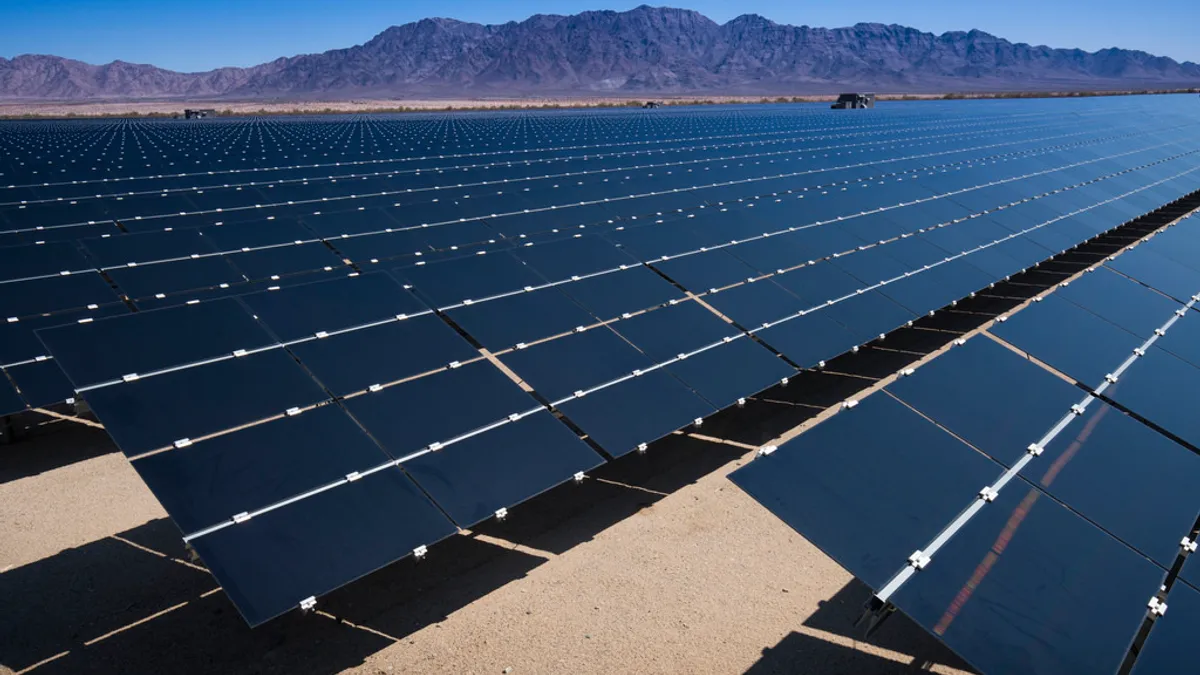Dive Brief:
- A California Assembly committee voted 10-5 in favor of raising the state's renewable energy target to 100%, giving new life to a proposal that had stalled last year.
- Senate Bill 100 would require the state to utilize only renewable and zero-emission energy sources, including nuclear, by 2045. If Democratic Gov. Jerry Brown signs it, the bill would raise the state's current 2030 target of 50% renewables to a 60% interim target.
- Hawaii is currently the only state with a 100% renewable energy mandate, but the state's unique geography, small population and abundant solar energy make it a poor comparison with California, which boasts the world's sixth largest economy.
Dive Insight:
By the end of 2017, about 43% of California's total electric system generation came from gas, followed by renewables at nearly 30% and large hydro at about 18%, according to the California Energy Commission. But the state's utilities are looking to avoid new gas plants or replace existing ones, adding further momentum behind the push to clean energy in the state.
Several other states are considering 100% clean energy mandates, including Massachusetts, New York, Oregon, Washington and Pennsylvania, according to Lauren Navarro, senior policy manager for Environmental Defense Fund's California programming. So far, only Hawaii has put such a goal into law.
Hawaii's goal of utilizing all renewable energy is an enormous task, but the ubiquitous sunshine and comparatively small size and population make it unique. California has 40 million residents — more than 10% of the country's population — and a 100% goal is evidence government leaders have confidence in the rapid advancement of clean energy.
The 100% renewables bill made progress in spring 2017 but stalled in the fall, facing pushback from utilities and lacking support in the Assembly. The Senate approved the measure last year in a 25 to 13 vote.
Bill author and Senate President Pro Tempore Kevin De León, D-Los Angeles, took to Twitter to praise the latest development. "We’re closer than ever to unlocking a clean-energy economy," he wrote.
The state's environmental goals and renewables targets are already aggressive, De León wrote. But rapid advances in green energy technology "shows that we have set the bar too low," he added.
Two years ago, California had 73% of the nation's solar capacity and produced 71% of the nation's utility-scale electricity generation from solar thermal resources, according to EIA. But the state still uses natural gas as its primary energy source. Nuclear energy also plays a significant role in California, but the state has charted a course to phase out all of its plants.
SB 100 now heads to the Assembly floor for consideration.














